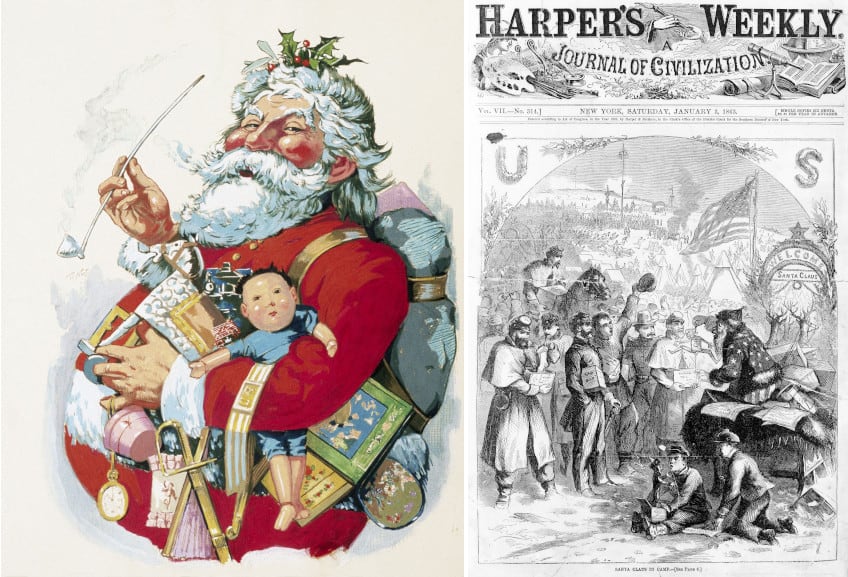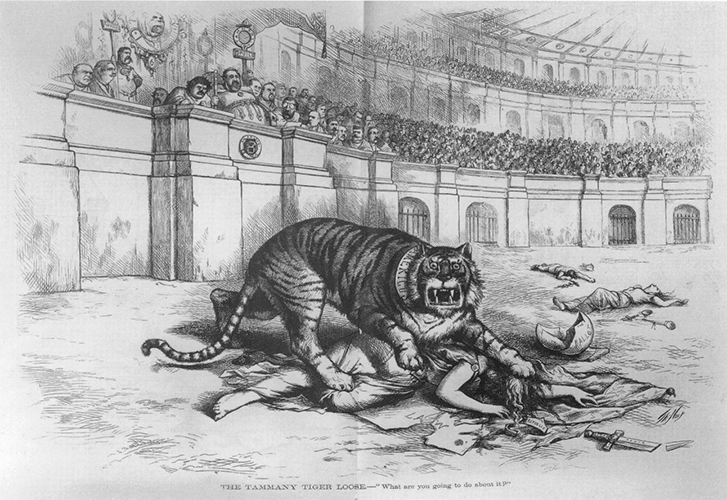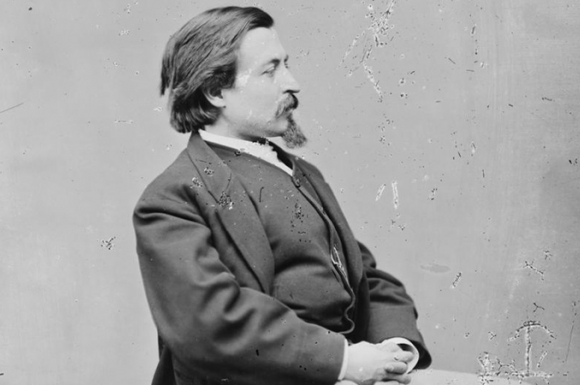In American pop culture, if one has to envision a Santa Claus. They probably see a cheerful man with a full white beard, dressed in a red suit. Consider that he is now carrying something. Advertising-influenced, it could be a Coca-Cola bottle, but more often than not, it’s usually a present or a kid curled up on his lap. This iconic image is still the symbol of Christmas in the country and now throughout the world, thanks to liberalisation and well, the internet. But do you know about the cartoonist who drew that illustration? It was a Bavarian artist who arguably influenced the current depiction of Santa, and is credited with creating this classic artwork. This is the story of Thomas Nast. The artist who is now considered the father of political cartoons, gave us many unique caricatures such as the Republican elephant, the Democratic donkey, etc. Nast was born on 26 Sep, 1840.
Nast and The Santa Claus Illustration
Speaking about the iconic image of Santa, the cartoonist’s depiction of Santa Claus, inspired by Clement Clarke Moore’s poem “A Visit from St. Nicholas,” first appeared in the 1862 cartoon “Santa Claus in Camp” in Harper’s Weekly’s Christmas edition. In this illustration, Santa is portrayed as a cherry-nosed, benevolent figure dressed in a fur coat adorned with American stars, symbolizing Union support during the Civil War. He stands before an enraptured crowd, holding a jumping jack doll labeled “Jeff,” representing Jefferson Davis, the Confederacy’s president, and his doomed future. Santa’s sleigh is brimming with gifts and copies of Harper’s papers, while tents and campfires create the backdrop. Above Santa, a large wreath with a star signifies hope and festivity amidst the wartime setting. This image not only reinforced military propaganda but also cemented Nast’s version of Santa as a patriotic and generous figure, blending popular culture with political sentiment.
Early Life and The Civil War
Thomas Nast was born in Germany on September 27, 1840, and immigrated to New York when he was a small child. Even though Nast struggled academically, he demonstrated a strong talent for drawing at a young age. By the time Nast was twelve, he was a student at the National Academy of Design, where he started to refine his distinct illustrating technique. In 1855, Frank Leslie’s Illustrated Newspaper eventually hired Nast, however it took some perseverance on his part. A few years later, Nast moved on to Harper’s Weekly because of financial issues at the company. Nast’s graphics became highly contentious as well as instantly identifiable thanks to his work on this periodical.

Thomas Nast was a staunch opponent of segregation and a fervent advocate for the abolition of slavery. He also supported the rights of Native Americans and Chinese Americans. However, despite championing these causes, Nast had his own biases, particularly against the Catholic Church and New York’s Irish immigrant population. He infamously portrayed Catholic bishops as crocodiles preying on children and frequently depicted the Irish as apelike in his ongoing campaign against both groups.

Later Years of Thomas Nast
Nast started his publication in 1892, but it was a failure. After securing a government position as a consulate official in Ecuador through Theodore Roosevelt’s intervention, he encountered financial troubles. After traveling to the South American nation in July 1902, he became ill with yellow fever and passed away on December 7, 1902, leaving him 62 years old.
:max_bytes(150000):strip_icc():format(webp)/Thomas-Nast-2219-3x2-56a489303df78cf77282dde2.jpg)
Nast is regarded as one of the greatest American illustrators of the 19th century and his work has persisted. It is impossible to overlook Thomas Nast’s legacy, even though his fame gradually waned. In his day, he was not only the visual propagandist but also aided in the growth of political cartooning in the United States.
Feature Image Courtesy: Globalwahrman.Blogspot.Com
References:
- https://www.illustrationhistory.org/essays/thomas-nast-the-rise-and-fall-of-the-father-of-political-cartoons
- https://www.thoughtco.com/thomas-nast-1773654
- https://www.smithsonianmag.com/history/civil-war-cartoonist-created-modern-image-santa-claus-union-propaganda-180971074/
- https://www.sil.si.edu/ondisplay/caricatures/bio_nast.htm
- https://www.widewalls.ch/magazine/thomas-nast-santa-claus.





